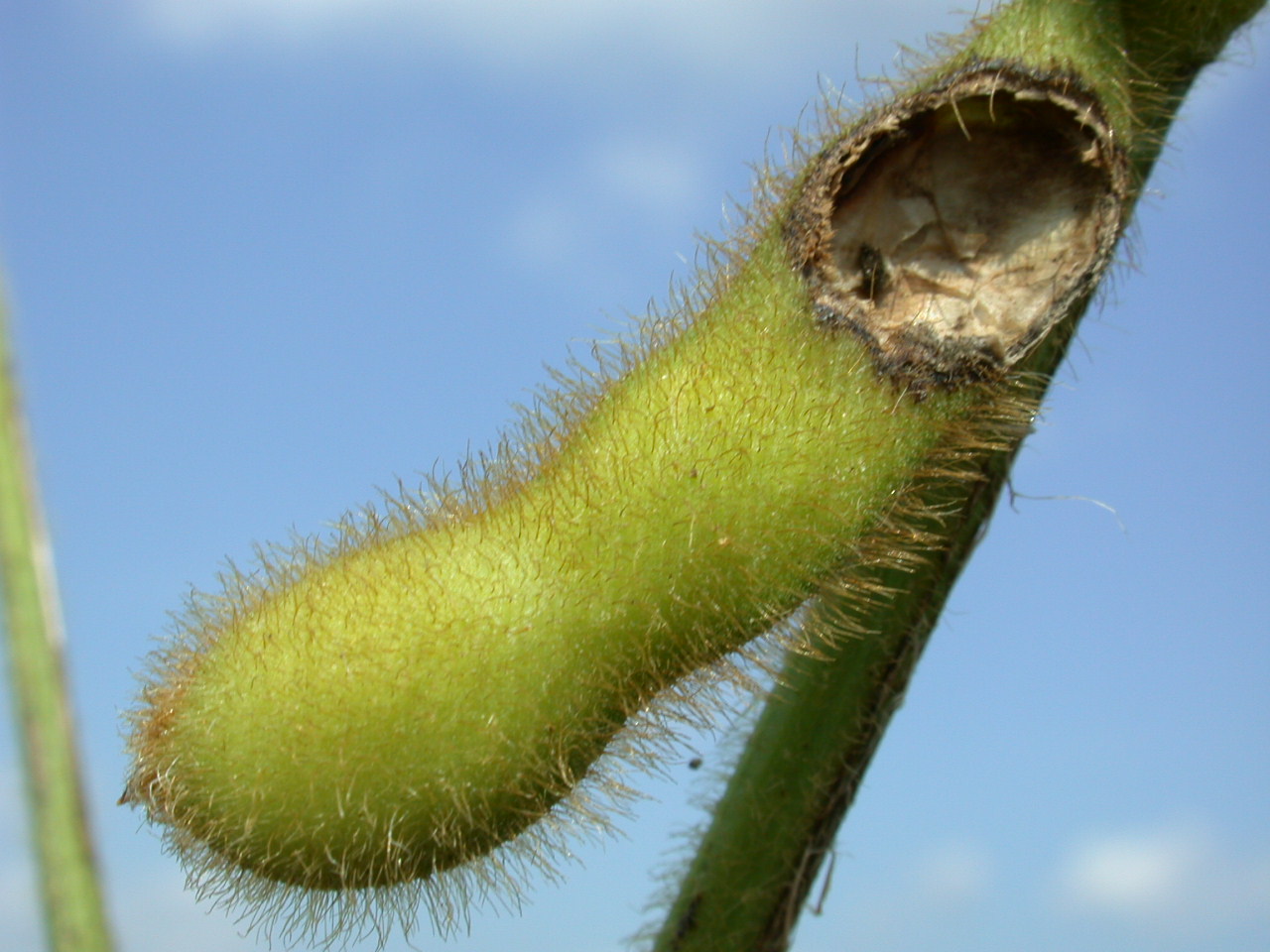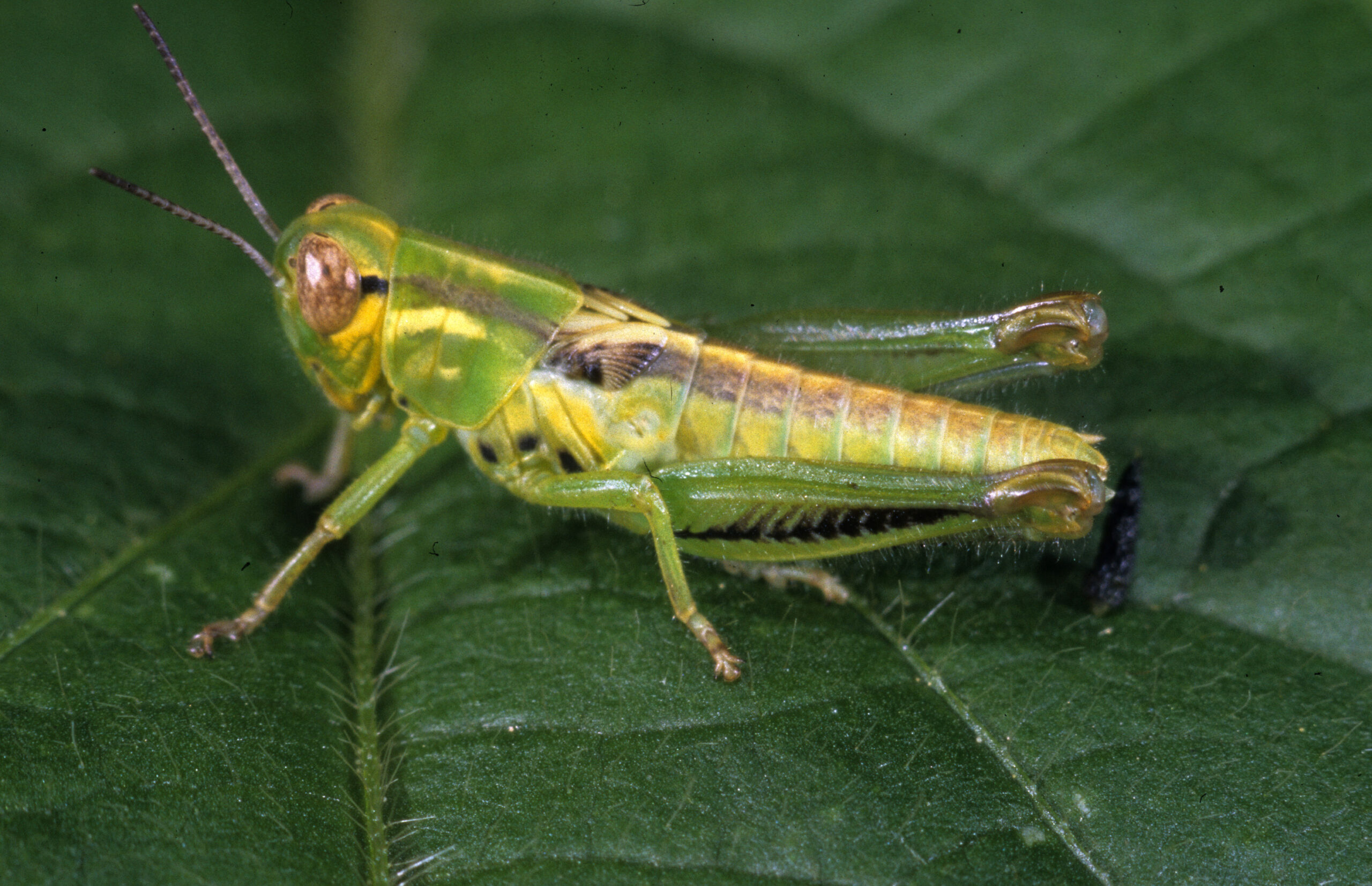Grasshoppers (Soybean)
Melanoplus spp.
Search the Pest & Crop Newsletter

The ability to see these full-sized life-cycle images is currently disabled to resolve an issue.
Appearance and Life History
Grasshoppers are generalists, feeding on grasses and weeds and often move to cultivated crops. Their populations vary from year to year. Crop damage is likely to be greatest in years when dry weather accompanies high populations.
Grasshoppers are brown to grayish-green jumping insects that are moderately long and have prominent heads and large compound eyes. The front pair of wings are narrow, leathery, and thickened. The hind pair are thin, broadly triangular, transparent, or sometimes brightly colored.
Nymphs generally resemble adults except for size and the absence of fully developed wings.
Several species of grasshoppers feed on soybean foliage. They commonly move into soybean fields during July and August when preferred food sources become scarce or early feeding sites are mowed. Grasshoppers cause the most damage in years of high populations coupled with dry weather. Drought conditions also reduce grasshopper mortality by suppressing naturally occurring fungal pathogens.
Most grasshoppers overwinter as eggs laid in autumn in grassy ditch banks, fence rows, alfalfa and clover fields, and/or pastures. Nymphs, young grasshoppers that lack wings and sexual maturity, hatch during late May through July and begin feeding on vegetation. There are usually five or six nymphal instars that require 40 to 60 days to reach the adult stage.
Damage

Photo by J. Obermeyer
The damage that grasshoppers cause appears as round to ragged holes in the leaves that extend in from the leaf margins and between the veins. Grasshoppers may also feed on and damage soybean pods, often chewing through the pod tissue into the seed. This may be a serious problem in dry years.
Sampling Method
- Walk slowly through areas in which grasshoppers are seen and estimate the population.
- Sight about a square yard (90 cm square) of foliage-covered row at a point 5 paces ahead of you. As you slowly approach this point, count the number of grasshoppers that leap from the designated area. Follow this procedure at 5 places within each infested area. Identify grasshopper-infested areas on a field map.
- While counting grasshoppers, do not walk in a straight line through the infested area. Continually change the angle of your path through the sample area.
- Check any field borders suspected of having grasshoppers (adjacent pastures, hay, or small grains, especially after these fields have been cut). Walk along field borders and, if grasshoppers are numerous, evaluate the population level using the procedure outlined above.
- In no-till fields where soybean has been planted in small grain stubble, grasshopper nymphs may hatch within these fields, resulting in feeding damage throughout the field.
- In no-till fields, sample 5 spots within each of 5 areas of the field.
- Determine the average number of grasshoppers per square yard (90 cm square), using the above sampling method, and estimate the average defoliation level for the field.
- If grasshoppers are feeding on soybean pods, randomly select 2 plants in each of 5 areas of the field and count the number of pods per plant and the number that show insect damage (10 total plants). Do not confuse grasshopper feeding with bean leaf beetle
Management Guidelines
Soybean Insect Control Recommendations:
- Treatment of soybean may be necessary at 30% or more defoliation before soybean flowering, 10% from flowering to pod fill, and 15% from pod fill to harvest. Treatment of field margins for grasshoppers may be advisable if an average of 15 nymphs or 8 adults per square yard (90 cm square) are observed.
For pod feeding, treatment may be necessary when approximately 10% of the pods are being damaged and grasshoppers are still present.

Grasshopper numbers can be drastically reduced by naturally occurring fungal pathogens.


